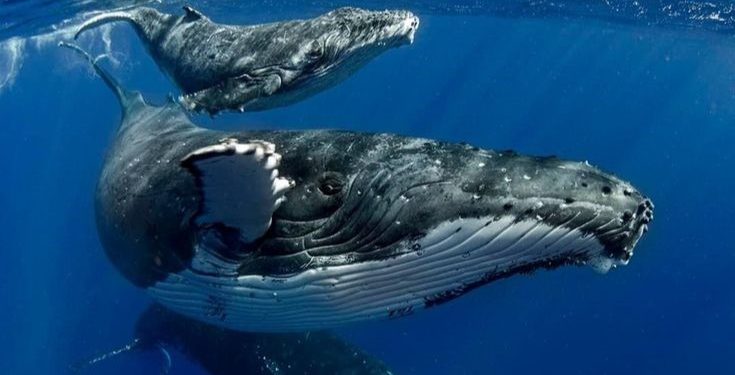Jakarta, Indonesia Sentinel — A new study has revealed that a male humpback whale (Megaptera novaeangliae) undertook an extraordinary migration across three oceans, traveling from South America to Africa in search of a mate. Researchers have described the journey as the longest cross-ocean migration ever recorded for the species.
According to Live Science, the whale’s journey began off the coast of Colombia in the eastern Pacific Ocean and ended near Zanzibar in the southwestern Indian Ocean. Covering a staggering distance of 13,046 kilometers, the humpback whale shattered previous migration records for its kind.
According to study published in Royal Society Open Science, the whale’s journey was likely driven by mating instincts, as male humpbacks increase their chances of reproduction by seeking out females in different breeding areas.
Humpback whales inhabit oceans worldwide and are renowned for their long migrations. However, this journey stands out because it involved switching between two distinct breeding grounds—a rare occurrence, as humpbacks typically exhibit strong site fidelity.
Researchers remain uncertain why whales change breeding locations, but shifting food distributions environmental factors, shifting food distributions, mate availability and growing whale populations that intensify male competition are believed to play significant roles.
Migration Patterns
Humpback whales typically follow consistent migration patterns, moving between polar feeding areas and tropical breeding grounds. However, this cross-ocean journey demonstrates a previously underestimated flexibility in their migratory behavior.
“This was such an exciting discovery that our first reaction was to think there must be a mistake,” said Ted Cheeseman, a study co-author and doctoral candidate at Southern Cross University in Australia.
The study relied on photographs uploaded to the Happywhale database, which tracks individual whales using the unique markings on their tails. The whale was first photographed in 2013 off Colombia and then spotted few years later in 2022, it turned up in Zanzibar.
The whale was seen within a competitive group—typically consisting of a single female closely guarded by a dominant male while other males vie for her attention.
“We were able to document new behaviors that provide critical insights into humpback whale ecology,” said lead author Ekaterina Kalashnikova, a biologist working with the Tanzania Cetacean Program and the Barazuto Scientific Studies Center in Mozambique.
Using AI, Scientists Managed to Have a ‘Conversation’ with a Humpback Whale
Humpback whales are known to migrate an average of 8,000 kilometers (4,970 miles) in a north-south direction between feeding and breeding areas. However, this whale’s record-breaking east-west migration sets a new benchmark.
Previously, the longest humpback migration on record was made by a female whale, which swam 9,800 kilometers from Brazil to Madagascar between 1999 and 2001.
As more data becomes available, scientists hope to gain a deeper understanding of how humpback whales adapt to evolving ocean conditions and shifting relationships within their populations.
(Raidi/Agung)

























